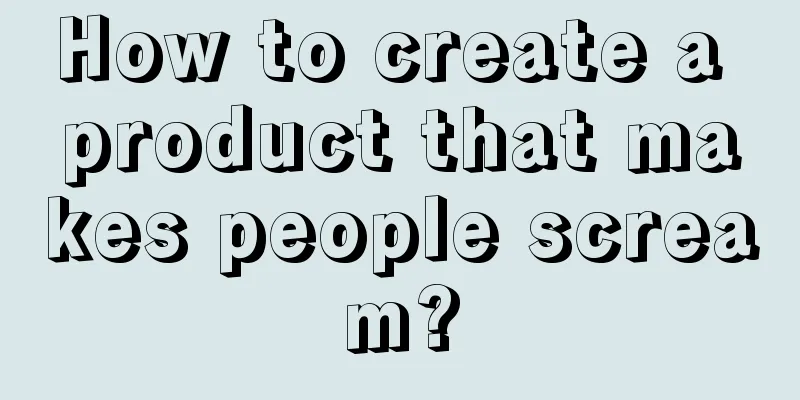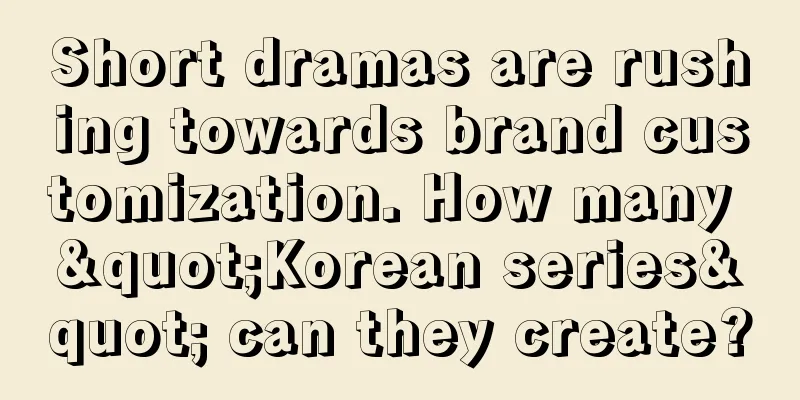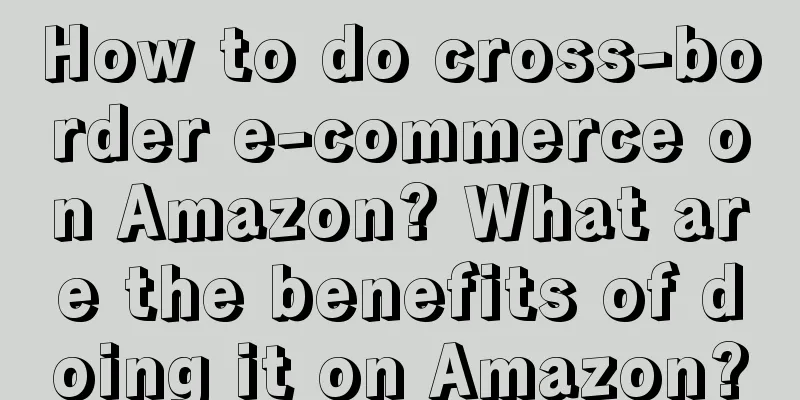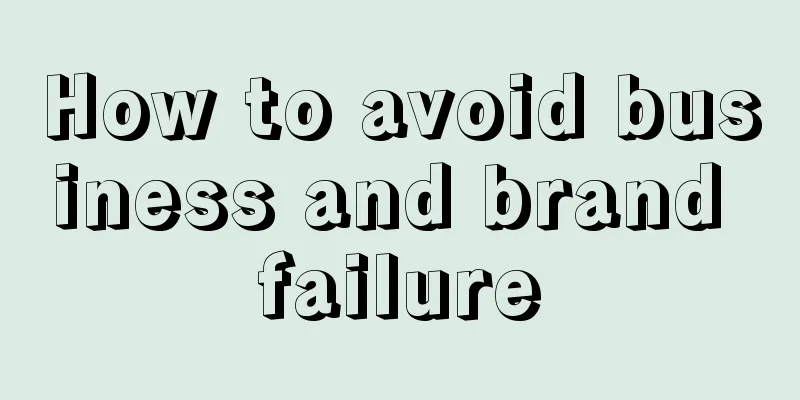How to create a product that makes people scream?

In this issue, we will study: How to make a product that will make people scream? To study this topic, we need to focus on one person, Tony Fadell, who was originally the head of the iPod department at Apple. In 2001, Jobs took back power at Apple. It was at that time that Tony joined Apple and proposed the idea of making iPod to Jobs. It can be said that the success of iPod completely saved Apple, which was declining at the time, and this man has since been called the "Father of iPod." After that, Tony was also responsible for the research and development of the first three generations of iPhone. Later, this person left Apple to start a business. The first product he made was called Nest Thermostat. This product can record the indoor temperature and adjust the room temperature to the most comfortable state according to each of our habits. At the same time, it can also help you save energy and money. In 2014, Google spent about $3.2 billion to acquire Nest Thermostat. In 2016, Time magazine selected the 50 most influential tools of all time. Tony's three products, iPod, iPhone and Nest thermostat, were all selected. It's amazing for a product person to have one product selected, but he actually had three products selected, which shows that he is a product expert. So what can we learn from this product expert? I think there are four main points, let's break them down one by one: To create a product that makes people scream, the product itself may not be important. If there is a methodology for "disruptive" products, there are about three. How did Steve Jobs design product stories? What gaps must an innovative product cross if it wants to be profitable? 1. To create a product that makes people scream, you must "turn the invisible into the tangible"Tony Fadell has a point of view. He said: "To make a good product, you must "turn the invisible into the tangible." What does it mean? He thinks we always focus on things that can be seen and touched, and ignore the importance of those invisible and intangible experiences. Don’t think that making a tangible product is enough. Integrating the intangible experience into the tangible product is a successful product. This is what he called turning the intangible into the tangible. What does intangible mean? It means customer experience. How does the customer notice the product? Will he consider buying this product? How to install the product? How to use it? How to repair it? Even the return and exchange process should be accurately described and the whole process should be visualized. When you think about all this clearly, you can turn the intangible into the tangible. Only then can you know why the product can make people scream and why it is good. After the success of iPod, many people began to sell their hardware devices to Tony. They always said that Tony was a hardware expert and would definitely like their ideas. But when they put their proud, carefully polished product in front of Tony, the first thing Tony did was to put it aside and then ask the other party: "How would you solve this problem without this product?" Tony asked this question because of his several career experiences. He changed jobs from General Motors to Philips and then to Apple. The more he changed jobs, the more he realized that many physical products did not need to be manufactured at all, as software could solve the problem. When we make a product or create something new, we often get carried away and think we have created something unique. Moreover, when you make something that seems unique, it is very easy to focus only on competing products and ignore substitutes. What is a substitute? Let me explain it to you. For example, substitutes for pre-prepared meals are not just pre-prepared meals from another brand, but also include Ele.me, Meituan, the 711 downstairs and Convenience Bee. In other words, the original product substitution solution exists across categories. For example, iQiyi’s competitors may not be Tencent, but Douyin and Xiaohongshu. For example, the competitor of a company’s commercial may not be a competing product commercial, but the dancing lady in TikTok. So, when we create something new, we should never say that this thing has no competitors in the market and is unique. What you need to focus on is, if this thing does not exist, is there an alternative solution? If not, this thing has meaning to exist. If it does, it has no meaning to exist. Tony often says, "Don't tell me what's special about this product, tell me how the customer journey will change because of this product." Only by asking yourself this question frequently can you create truly valuable products. Because your product is not just your product, it is also a complete set of customer experience. Although many people talk about experience now, I think everyone has a cognitive misunderstanding, always thinking that the experience is only when the user gets it in their hands, which is not true. The so-called customer experience refers to the entire customer journey, including the entire chain of links such as seeing, understanding, purchasing, using, after-sales, and repurchase, and how customers think and act at every key touchpoint of your product. Tony Fadell divides the customer journey into seven major stages. The first stage is called perception, the second stage is called education, the third stage is called acquisition, the fourth stage is called familiarity, the fifth stage is called use, the sixth stage is called support, and the seventh stage is called loyalty. ▲ Customer Journey Map Why is the customer journey important? Because customers do not differentiate between your product, your advertisement, your sales representative, or your app. They do not have this awareness. As long as they are not satisfied with the "customer journey", they will think it is your company's problem. Customers will think that these are all the same. Your customer journey represents the impression that customers have of you. For example, when Tony Fadell first started working on the Nest thermostat, the team spent every day thinking about how to design artificial intelligence, how to use the interface, the color of electronic and mechanical parts, etc., all of which were issues related to physical products. Later, they found that they had made a fatal mistake. Although users bought a physical thermostat, they actually used the APP most frequently. Users would open the APP on the way home, turn up the heat at home, check how long the air conditioner had been on, and check the energy usage for the month. If they had any questions, they could also enter the APP and enter the community through the APP to let customer service answer all difficult questions online. They counted that about 70% of customer experience came directly from using the APP, rather than the physical thermostat product. Therefore, when we face the customer journey, we should consider the customer experience before making the product, rather than considering the customer journey after we have made the product. In particular, you cannot wait until the product is released to consider marketing issues, because marketing is included in the customer journey. When designing the product, you should find ways to do marketing from the customer journey. How is the Nest thermostat marketed? They found a barrier in the customer journey. When the testers tested it, they found that if everything went smoothly, it took an average of one hour for a user to install the Nest thermostat. If a customer bought my thermostat and had to spend an hour installing it themselves, the experience would be very, very bad. They conducted another round of investigation and found that most of the time, especially in the first half hour, customers were not installing the thermostat, but looking for installation tools, such as pliers and screws, before they could start installing the thermostat. After the tools were ready, the installation was very fast, and it could be completed in about 20 minutes. At this point, most companies may breathe a sigh of relief, thinking that the actual installation only takes 20 minutes and the problem has been solved. But the reality is that if a customer buys this thermostat and the installation is not completed in the 5th minute, he will roll his eyes and be very annoyed and frustrated. So, Tony added a new component to the product, a very small screwdriver. The screwdriver is about the size of a palm and comes with four different blades. More importantly, it is a screwdriver within reach, so users no longer have to spend half an hour looking for a screwdriver. They can immediately install the thermostat with it in their hands. They later discovered that the screwdriver is not only a five-star tool, but also a marketing tool that helps many customers remember the brand and fall in love with the product. Many customers pick up the Nest thermostat screwdriver when changing the batteries in their children's toy cars or assembling many things in their homes. At that moment, other things became attachments, and the screwdriver became the protagonist. Moreover, many journalists wrote articles about the screwdriver to report this incident. This screwdriver appeared in many users' five-star reviews. You see, this is a kind of free public relations, a kind of free word-of-mouth publicity. At the front desk of Nest, they even put a bowl of screwdrivers instead of candies. Because this screwdriver has become a symbol of the user experience of the entire company. However, because this screwdriver is very sophisticated and has 4 different blades, each screwdriver is eating into the company's profits, so every once in a while a group of employees would suggest stopping the production of this screwdriver because they felt it increased sales costs. But Tony said, what they don't understand is that the screwdriver is not a direct sales cost, but a marketing cost. Because this screwdriver saved us a lot of network reputation maintenance costs and advertising costs. So, it is a marketing cost, not a sales cost. We introduced how Nest completely optimized the customer journey by designing a screwdriver. But the question immediately arises: when we want to describe the customer journey, how can we accurately describe the customer journey of my product? Because each product is different, the customer experience is different, and the customer journey is also different. Think about it, the customer journey of buying a can of Coke and buying a car is completely different. The car is much more complicated. Tony gave two very specific methods, which I find very practical and recommend to everyone. The first method is that when we want to describe the customer journey, first you have to take out a piece of paper, a pen, or open your computer and write down what feedback you want to get from early users? What kind of headlines do you want to see? What kind of news do you want to see? What kind of feelings do you want to evoke in users? Write all these down. You have to make these things visible and tangible, take them out of your mind and put them into something tangible. Don’t wait until the product is finished to do this. Be sure to design the entire journey before planning product features. Do it in advance. The second method, which is also a particularly interesting method, is to write a biography for the client. When we make products, we often create character portraits. We would say that the target group of our products is women aged 25 to 35, mainly first- and second-tier white-collar workers, with a monthly income of approximately 5,000 to 8,000 yuan, etc., but these data descriptions are all mechanical descriptions. Faced with such data, you cannot optimize and describe the customer journey, because the data gives you cold and accurate answers, and cannot tell you what the customer likes and dislikes. But the real customer journey requires you to discover the emotional elements of the customer. Therefore, you cannot just collect data. How did Tony do it? After collecting all the data, Tony would create real roles for users based on the data. For example, when he was working on Nest, he created two different roles for his target users, one male and one female. He said, "My male user persona is passionate about technology, loves iPhones, and is always looking for some cool new gadgets, while the woman is the one who makes the final decision at home. She decides what to buy and what not to buy at home. She likes beautiful things, but is not very interested in this new enthusiast technology product." Moreover, they gave the two people names, designed corresponding images, and made a mood board based on their interests, children, and work. On this mood board, they describe what brands this man and woman would like, what part of their house decoration they care most about, and how much they would spend on heating bills in the winter. You see, the description is very detailed. Moreover, they also designed some plots. They would analyze the man's facial expressions to understand why he picked up the box. In this way, he could judge how to persuade his wife to agree to buy this new thing. Over time, they also expanded the customer role biographies and added more roles, including couples, family friends, and roommates. They imagined what these roles would like and in what circumstances would they buy the product. You see, what Tony does is to transform all the abstract data into very specific, warm and perceptible character portraits. Looking back, creating a product that makes people scream, why the product itself may not be important? Because the most important thing is the product experience, and many things are intangible. Therefore, the most critical point in product development is to turn the invisible into the visible. During the product planning stage, you must think about the entire customer journey and integrate the customer journey into early product design and product planning. 2. If there is a methodology for “disruption”, there are about threeAfter Steve Jobs, people often call for disruption, but there are only a few companies that truly disrupt the world. In my opinion, most companies are just scratching the surface of the business world. If you want to create a product that disrupts the world, what do you do? In summary, Tony's methodology has three points: 1. The premise of subversion is to be understoodDisruption is good, but excessive disruption is not. The premise of disruption must be that consumers can understand your product. For example, Google Glass is a failed example. In April 2012, Google released this pair of glasses, which has almost the same functions as smartphones. It can control taking photos, video calls, identifying directions, surfing the Internet, processing text messages, sending electronic files, etc. through voice control. However, the processing method of smart glasses is more intelligent, which is to control these things through voice or some body movements, unlike mobile phones which are operated by buttons. What is the problem with this pair of glasses? Although its appearance and use are new in many ways, consumers are confused about its core purpose. You see, almost all of its functions can be replaced by mobile phones, and this pair of glasses has a big bug. First of all, the battery life is very problematic. The official battery life is 4 hours, but if you watch a video, the glasses may run out of power in 20 to 30 minutes. The most exaggerated thing is that it was accused of invading privacy. When wearing glasses, users don’t really know whether you are filming me. Foreign countries attach great importance to personal privacy, so this pair of glasses was later removed from the shelves. A highly innovative product just lost the market. In my opinion, the biggest problem with Google Glass is that consumers can't immediately get its purpose. But if you look at Apple's Vision Pro, which is also a VR helmet device, the commercial scenario of this product is very specific. When users put it on, they can see that it is used in home audio-visual scenarios and can clearly perceive what it is used for. In conclusion, no matter how disruptive a product is, it must be intuitive for consumers to understand its purpose. Remember, it must be intuitive. Let’s take another successful example. The first generation of iPod did not have a music store. Why not? It was not because Jobs and Tony did not think of building a music store at the time. When developing iPod, they planned various iTunes features, but did not have time to implement them at the time. Moreover, they felt that the product had been disrupted enough. It was a huge leap for people to switch from CDs to MP3s. If they were asked to take another step forward, users would not have time to balance. So the first generation of iPod gave up the music store. When the second and third versions came out, it became a natural thing to add a digital music market. Therefore, no matter how disruptive a product is, it must allow consumers to intuitively understand its purpose. I emphasize this point again: no matter how disruptive a product is, it must allow consumers to intuitively understand its purpose. 2. To disrupt the market, it is often not enough to disrupt only one linkWe often think that making a disruptive product is enough to disrupt the world. In fact, it is not. If you want to disrupt the entire market, it is not enough to disrupt the product itself. Often your production, your sales, your promotion, and your service all need to be disrupted before you can win in the end. Let’s take the Nest thermostat as an example. The biggest competitor of Nest thermostat is Honeywell thermostat. When Nest wanted to enter this market, it found that Honeywell was unbeatable. At that time, this thermostat category was not sold online, so consumers could not shop around and could only buy it at hardware stores. Moreover, the thermostat was very complicated to install. It was impossible to install it yourself. You had to ask a maintenance person to come to your home to install it, and it took a long time to install it. At that time, if your air conditioner or home heater broke down, you had to spend money to buy a new thermostat, regardless of whether you needed it or not. So for every extra Honeywell thermostat sold by the air conditioner repairman, the manufacturer would give him a commission. If he sold enough thermostats, Honeywell would send him on vacation to Hawaii. The monopoly of services and the bundling of interests made it a brand that monopolized the market. Under these circumstances, salespeople and maintenance personnel have no incentive to sell Nest thermostats. Even though your product is great, you can’t compete with this established brand if you don’t offer enough sales bonuses or send them on vacation. What about the Nest thermostat? The only way to beat the competition is to bypass existing channels and sell it in a place where thermostats have never been sold before. The first retail partner they developed was Best Buy, a foreign company. Best Buy is the world's largest home appliance and electronics retail group. At that time, thermostats were always sold in hardware stores, and Nest thermostat was the first to enter the offline retail channel. At first, Best Buy didn't even know where to put the product because there wasn't a single shelf selling thermostats. Tony told Best Buy, "I don't want a thermostat aisle, because a thermostat aisle alone is too small and useless. I want an Internet home aisle where all Internet home products can be placed." The purpose of Nest's thermostat entering this industry was not to subvert Best Buy, but because it sells thermostats, it had to invent a shelf like the Internet home aisle with Best Buy. From this example we can see that disruption cannot be limited to products, you must also disrupt every key link in the marketing chain. Let’s take another example. For example, Tesla initially made electric cars, which was already a huge disruption and impact on the industry. However, with the entry of various global car manufacturers, electric cars no longer have such high technical content, so Tesla began to disrupt various non-product links. They have disrupted charging networks, autonomous driving technology, battery services and other links. Let me repeat the second point: Disruption cannot be limited to products. Your production, sales, promotion, and services may all need to be disrupted in order to ultimately win the market. 3. The first subversion is to kill the opponent, the second subversion is to kill yourselfProduct disruption can be divided into the first disruption and the second disruption. The first disruption is to kill the opponent, and the second disruption is to kill yourself. At that time, the iPod defeated all MP3 players and occupied about 85% of the global market share. No one else could compete with the iPod. But later, most mobile phone manufacturers began to think about getting a piece of the pie. They began to turn mobile phones into MP3 players, and text messages, games, and music could be integrated into one device. Users no longer needed to buy different devices separately. At the same time, mobile phones are rapidly becoming popular, and data networks are becoming faster, higher quality, and cheaper. It is foreseeable that before long, everyone will listen to music through their mobile phones, and there will be no need for players such as MP3, nor will there be a need to download a song before listening. So, Apple’s second disruption was to kill itself, killing the iPod with the iPhone. To sum up, if there is a methodology for subversion, there are probably only three of them. First, the premise of subversion is that it can be understood. No matter how it is subverted, consumers must be able to intuitively understand its purpose. Second, if you want to subvert the entire market, it is often not enough to subvert just one link. Your production, sales, promotion, and service may all need to be subverted before you can ultimately win the market. Third, the first subversion is to kill the opponent, and the second subversion is to kill ourselves. We must have the courage to kill ourselves. A qualified entrepreneur must understand that to create a product that makes people scream, the product itself is not as important as you think, the user's product experience is more important. Moreover, having a product that makes people scream is just the beginning. You also need to know how to shape the product story and design the product reasonably to make it profitable. *This issue’s interpretation comes from: Creation Author: General Liang WeChat public account: General Liang |
<<: The traffic code behind the incredible
Recommend
How to get started as a newbie at Lazada? Lazada operation ideas for newbies
Lazada is a newly emerging e-commerce platform in ...
How many accounts can be linked to Amazon credit card? Can I use UnionPay card as credit card?
To open a store on Amazon, you need to bind a cred...
Very professional! Found a way to [data-guided operations]
In the field of data analysis, it is a challenge t...
A simple side hustle guide
At a time when the employment situation is not opt...
How long will it take for an Amazon account to be closed? How much can it be sold for?
On Amazon, if you have your own account, you can b...
How to promote on Amazon? What are the methods?
If we open a store on Amazon, we have to promote t...
How does Ozon Logistics deliver goods? Process Introduction
If you want to do business in Korea, you can consi...
Must learn! Xiaohongshu released [Store Broadcast 3+3 Management Method]!
Xiaohongshu has just released the "Simple Liv...
How does Amazon enter a competitor's store? What are the benefits?
As the saying goes, knowing yourself and your enem...
How to apply for a loan from Wish? Loan rules from Wish
On the Wish platform, merchants need to wait for b...
The first large-scale incentive after the WeChat Store name change is here
After changing its name to Video Store, WeChat Sto...
Paris Olympics: A training ground for global sports brands
The Paris Olympics is not only an arena for athlet...
How many main pictures can an eBay product have? Are there any requirements?
Nowadays, many people choose cross-border e-commer...
Behind Meituan’s doubling of its bottom: From infinite war to mind war
The local life track is constantly flooded with ne...
How does Pinduoduo deliver goods through overseas cross-border e-commerce? What are the supporting policies?
Many friends still like to shop on Pinduoduo, beca...









